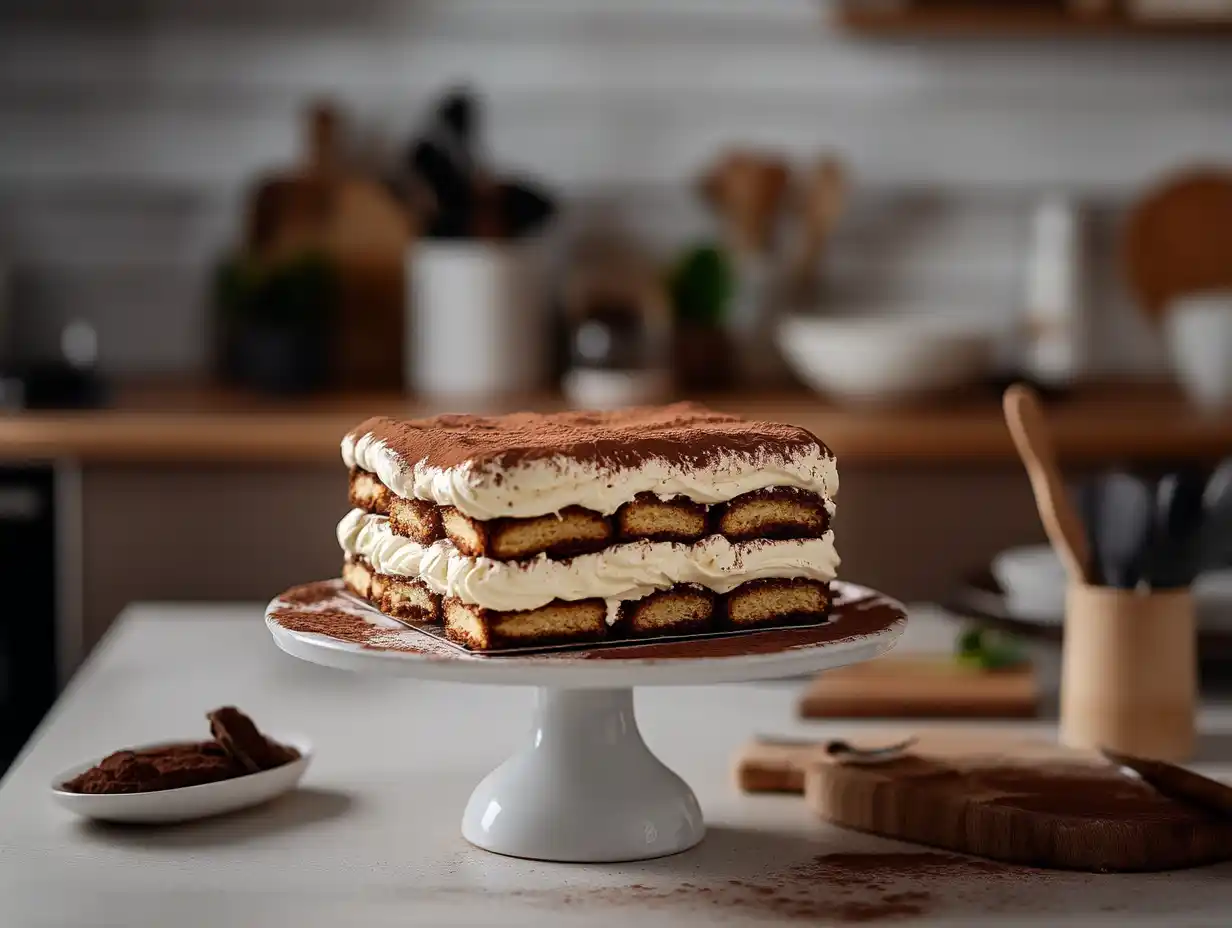Tiramisu Cake that you should try to make at home has become one of the most beloved dessert trends for both amateur bakers and seasoned pastry chefs. This luscious, layered dessert seamlessly blends coffee-soaked cake or ladyfingers with a rich mascarpone cream, delivering a symphony of flavors and textures in every bite. Making it at home not only ensures the freshest ingredients but also allows you to customize sweetness, coffee intensity, and decorative touches to match your personal taste or impress guests at your next gathering.
In this article, we’ll guide you through everything you need to know from the fascinating origins of tiramisu in Northern Italy to a foolproof, step-by-step recipe that yields a perfectly silky cake every time. You’ll discover essential tips on choosing the right mascarpone, mastering the espresso soak, and troubleshooting common issues like runny cream or oversaturated layers. Plus, we’ll explore creative variations think chocolate-drizzled tiramisu, berry-infused twists, and even gluten-free or vegan adaptations that will inspire you to make each version uniquely yours.
Whether you’re hosting a dinner party, celebrating a special occasion, or simply craving an indulgent treat, homemade tiramisu cake offers the ideal balance of elegance and comfort. Ready to dive in? Let’s start with the origins and history that turned a simple coffee dessert into a global phenomenon.
In This Recipe
The History and Origin of Tiramisu Cake ”Tiramisu Cake that you should try to make at home”
Traditional Italian Roots
The name “Tiramisu” comes from the Italian phrase “Tirami su”, meaning “pick me up” or “cheer me up.” This phrase perfectly captures the essence of the dessert it’s light, comforting, and infused with bold coffee flavors. Originating in the Veneto region of Northern Italy, tiramisu as a dessert first gained popularity in the 1960s. Its original form featured a simple layering of espresso-soaked ladyfingers (savoiardi), a mixture of egg yolks and mascarpone cheese, sugar, and a dusting of cocoa powder.
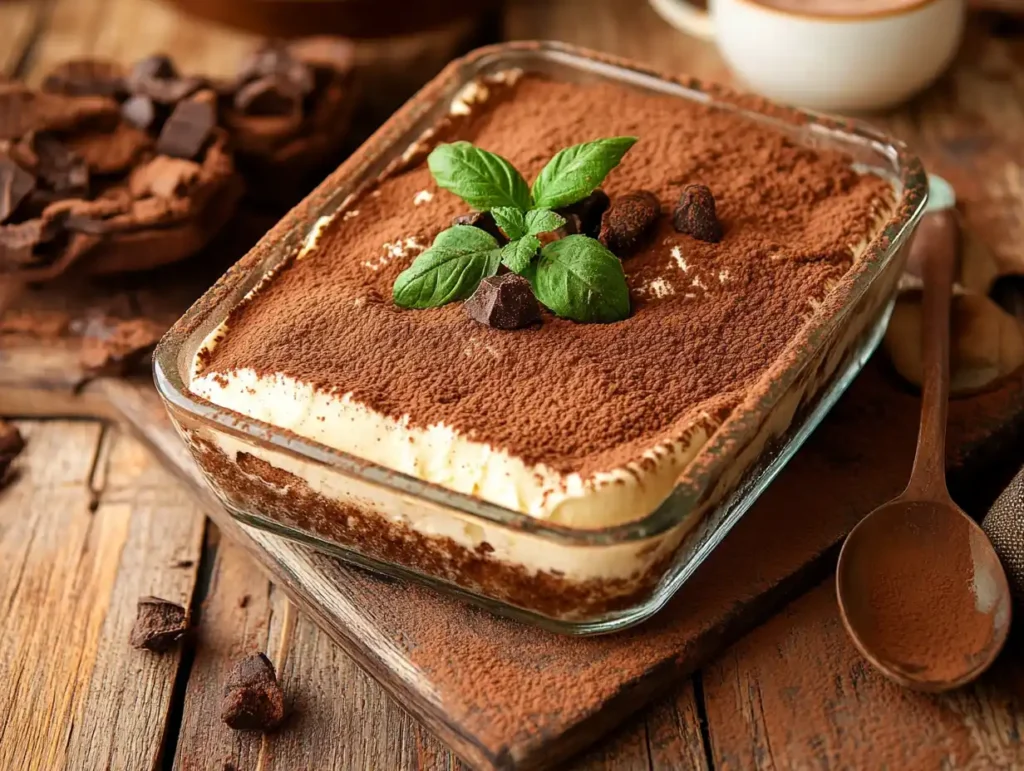
Contrary to some myths that place its invention centuries ago, food historians trace tiramisu’s roots to more recent times. The most agreed-upon origin story credits Le Beccherie, a restaurant in Treviso, as the birthplace of tiramisu. Chef Roberto Linguanotto and his apprentice Alba Campeol are often named as the pioneers of the modern recipe. They intended the dessert to be an energizing meal that combined eggs, sugar, and strong coffee ingredients traditionally used to rejuvenate.https://tastesbetterfromscratch.com/easy-tiramisu/
Over time, the dessert’s simplicity and elegant flavor made it a hit across Italy, quickly spreading to other parts of Europe and eventually to the United States. Its classic form remains beloved, though it has since evolved into many versions including cakes, cupcakes, trifles, and more.
Evolution into Cake Form
Originally served in cups or bowls, tiramisu was never meant to resemble a conventional cake. However, as global baking culture expanded and culinary creativity blossomed, chefs and home bakers began reimagining tiramisu in a more structured, sliceable format. The tiramisu cake was born from the desire to serve this iconic dessert in a more festive, layered form making it perfect for birthdays, dinner parties, and celebrations.
The cake version typically swaps the traditional ladyfingers with sponge cake or genoise soaked in espresso and coffee liqueur. This gives the dessert greater structural integrity, allowing for elegant presentation while still preserving the signature creamy layers. In modern pastry shops, tiramisu cake has become a staple, available in both round and square forms, sometimes adorned with whipped cream, grated chocolate, or decorative cocoa patterns.
Additionally, cultural adaptations have played a role in its evolution. For instance, in Japan, tiramisu cake often includes matcha instead of coffee. In France, patissiers might incorporate crème pâtissière for a smoother texture. In the U.S., it’s common to see cream cheese as a mascarpone substitute due to availability and cost. These variations show how a humble Italian dessert transformed into a global canvas for creativity.
Tiramisu cake has grown beyond its heritage, becoming not just a dessert, but a symbol of culinary fusion. Its transformation from a chilled spoon dessert to a refined layered cake underscores the beauty of food evolution where tradition meets innovation, and where every baker has the chance to put a personal spin on a beloved classic.
Why Make Tiramisu Cake at Home?
Freshness and Flavor
One of the biggest reasons to make tiramisu cake at home is the unbeatable freshness. Unlike store-bought versions that often sit in refrigeration for days, homemade tiramisu cake is crafted with ingredients you select and assemble just before chilling. This ensures the espresso is still aromatic, the cream layers are fluffy and rich, and the overall texture is moist without being soggy.
Fresh mascarpone cheese, real brewed espresso, and high-quality eggs create a richer and more authentic taste experience. Moreover, when you make it yourself, you can tweak the sweetness level, adjust the coffee strength, or even use organic and preservative-free products for a healthier option.
Not to mention, homemade cakes aren’t subjected to commercial preservatives or artificial stabilizers. The result is a cleaner, more wholesome dessert that bursts with flavor and love two ingredients you just can’t buy pre-packaged.
Customization and Creativity
Homemade tiramisu cake opens the door to endless customization. Want to add a hint of hazelnut or a swirl of dark chocolate ganache? You can. Prefer a stronger coffee punch or a touch of orange zest? Go ahead. Making the cake yourself allows for full control over the recipe, allowing you to tailor it to suit your preferences or dietary needs.
Even the structure of the cake can be adapted. While the classic tiramisu uses ladyfingers, many bakers opt for sponge cake or genoise for a firmer, layered presentation. You can also experiment with flavor-infused syrups like Amaretto, rum, Kahlúa, or Irish cream to give your cake a grown-up twist. And for a kid-friendly version, you can replace coffee with hot cocoa or chocolate milk.
Additionally, presentation becomes a canvas for creativity. You can dust the top with cocoa powder, arrange chocolate curls, or create elegant designs using stencils. Some bakers even top their tiramisu cake with edible gold flakes or fresh berries for a modern aesthetic.
There’s also room to personalize based on seasons and events. In winter, spice it with cinnamon and nutmeg; in summer, incorporate fresh berries or citrus zest. For Valentine’s Day, heart-shaped molds and a hint of raspberry liqueur turn your cake into a romantic gesture.
Homemade tiramisu cake is more than just a dessert it’s an experience. From brewing fresh espresso to layering silky mascarpone, every step brings satisfaction and a sense of accomplishment. Plus, sharing your creation with friends or family adds a personal touch that store-bought cakes simply can’t match.
Key Ingredients for the Perfect Tiramisu Cake
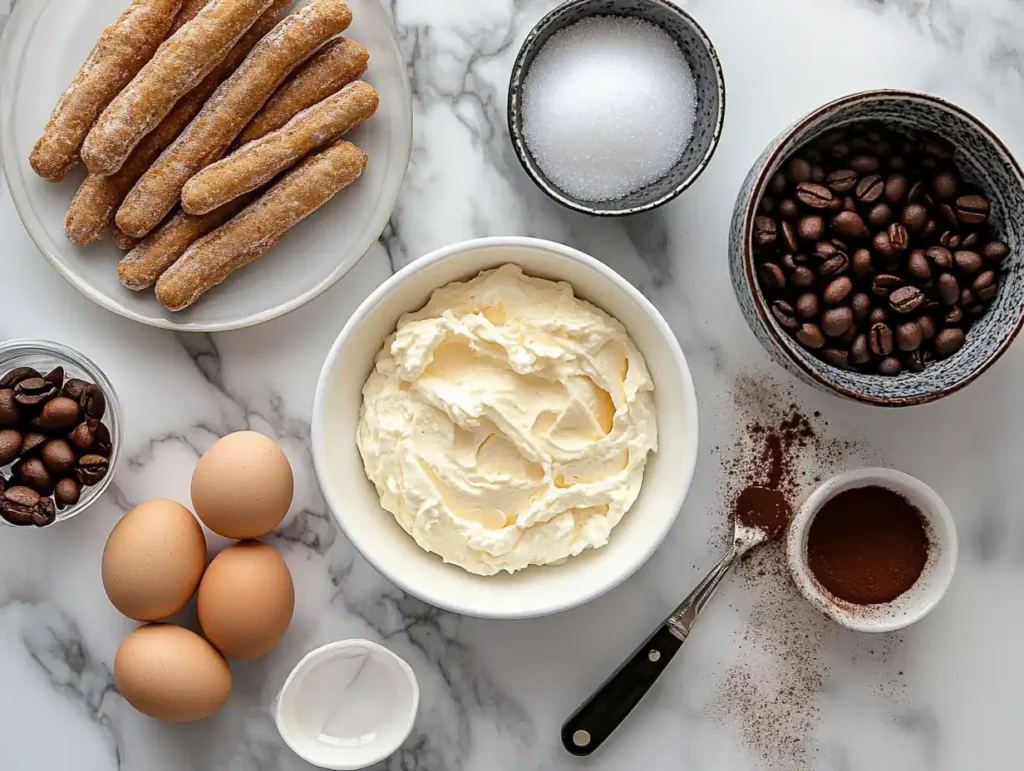
Mascarpone Cheese – The Creamy Core
Mascarpone is the heart of any authentic tiramisu cake. This rich, velvety Italian cheese lends the dessert its signature smoothness and subtle tang. Unlike cream cheese, which is firmer and slightly more acidic, mascarpone has a delicate sweetness and a buttery consistency that blends perfectly with sugar and whipped cream or egg yolks.
When choosing mascarpone, look for full-fat versions with minimal additives. Some well-known Italian brands like Galbani or BelGioioso offer premium quality, but you can also find locally made varieties at specialty grocers. If you can’t find mascarpone, a homemade alternative using heavy cream and lemon juice curdled into a cheese base can work in a pinch, though the texture may differ slightly.
Espresso and Coffee Liqueur – The Flavor Backbone
Tiramisu cake isn’t tiramisu without a bold coffee flavor. Freshly brewed espresso is the gold standard it offers depth, bitterness, and aroma that instant coffee simply can’t replicate. You’ll typically need about 1 to 1½ cups of espresso to soak your cake or ladyfinger layers, depending on the size of the dessert.
Coffee liqueurs such as Kahlúa, Tia Maria, or even homemade mixtures using vodka and espresso add complexity and a touch of sweetness to the soak. However, if you’re serving children or prefer an alcohol-free version, you can skip the liqueur and enhance flavor with vanilla extract or coffee syrup.
Pro tip: Let the espresso cool slightly before soaking the layers. Hot coffee can cause the mascarpone cream to break down and create a runny texture.
Ladyfingers vs. Sponge Cake – Choosing the Right Base
Traditional tiramisu uses ladyfingers (savoiardi), which are crisp, sugar-dusted biscuits that soften beautifully when dipped in coffee. They’re quick, mess-free, and lend an airy lightness to the cake. However, if you’re making a more structured, sliceable cake, sponge cake or genoise offers a stable and flexible alternative.
Sponge cake, made from whipped eggs and minimal fat, soaks up coffee evenly and creates neat, clean layers. Genoise, an Italian-style sponge, is slightly drier but excellent at holding up under creamy layers. Both options can be baked at home or purchased pre-made at bakeries or stores.
For an added twist, chocolate sponge cake can be used to intensify the dessert’s richness, especially when paired with a mocha mascarpone cream.
Eggs and Sugar – The Cream’s Foundation
The creamy mascarpone layer traditionally begins with egg yolks beaten with sugar until pale and thick. This mixture, known as a sabayon, is then folded into mascarpone and whipped cream or egg whites for a light, mousse-like texture.
For a safer and more stable result, many modern recipes recommend cooking the egg yolks gently over a double boiler, reaching a safe temperature of 160°F (71°C) to eliminate any risk of salmonella.
Alternatively, pasteurized eggs or egg-free recipes using heavy cream and gelatin are also options for those concerned about raw ingredients. The sugar, usually granulated, should be beaten until fully dissolved into the yolks or cream to prevent any grittiness.https://royalesrecipes.com/caramel-cheesecake-cookies/
Together, these ingredients form the soul of tiramisu cake delicately balanced layers of flavor and texture that melt in your mouth. Selecting high-quality versions and handling them with care ensures your cake not only tastes exquisite but also looks bakery-perfect.
Step-by-Step Homemade Tiramisu Cake Recipe
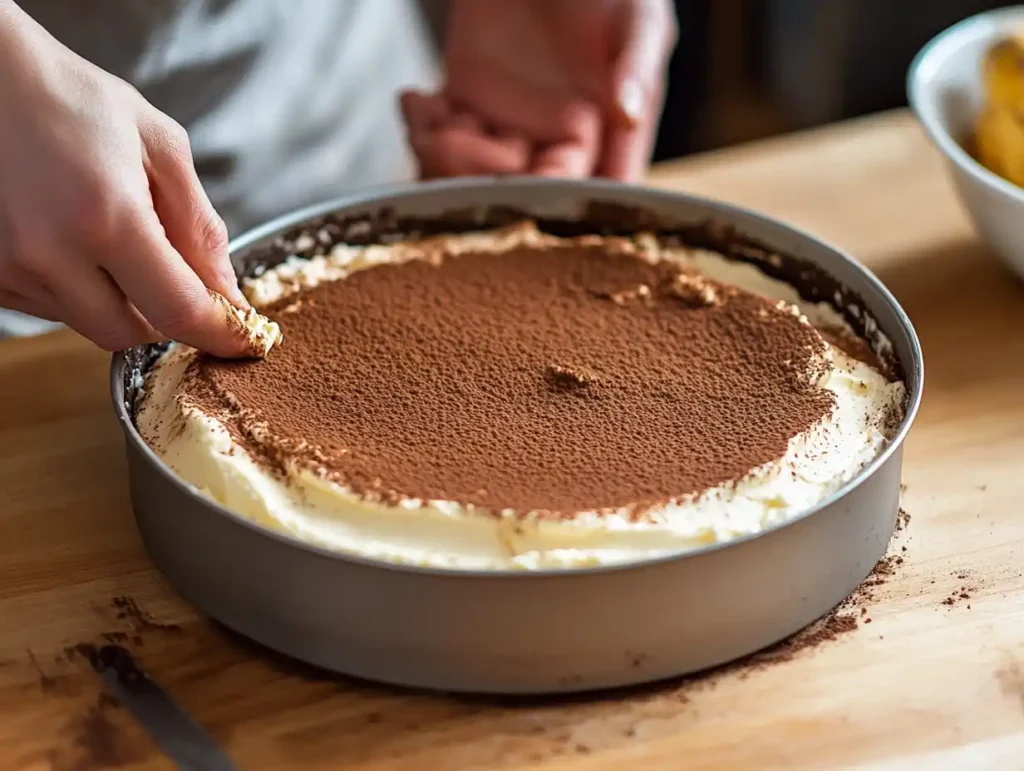
Preparing the Espresso Soak
The espresso soak is what gives tiramisu its iconic coffee flavor. To start, brew a strong batch of espresso about 1½ cups. If you don’t own an espresso machine, you can use a moka pot or very strong brewed coffee. Let the coffee cool slightly before using; hot coffee can melt your cream layers and cause sogginess.
Next, add 2 to 4 tablespoons of your preferred coffee liqueur (like Kahlúa or Tia Maria). If you’re avoiding alcohol, replace it with a teaspoon of pure vanilla extract or coffee-flavored syrup for a similar depth.
Pour the espresso mixture into a wide, shallow dish. This will make it easier to dip your ladyfingers or sponge slices evenly. You want them soaked, but not falling apart about 1 to 2 seconds per side is enough.
Making the Mascarpone Cream
To prepare the signature mascarpone filling, begin with 4 large egg yolks and ½ cup (100 grams) of granulated sugar. Using a double boiler, whisk the yolks and sugar constantly over simmering water until the mixture becomes pale, thick, and reaches about 160°F (71°C). This process creates a sabayon light, airy, and safe to eat.
Once off the heat, let the sabayon cool for a few minutes. Then gently fold in 1 pound (450g) of mascarpone cheese at room temperature until the mixture is smooth and lump-free.
In a separate bowl, whip 1 cup (240ml) of heavy cream until stiff peaks form. Fold the whipped cream into the mascarpone mixture in batches to maintain volume and creaminess. The result should be silky and thick enough to hold shape between layers.
For added stability and texture, some recipes incorporate a tablespoon of gelatin dissolved in water or milk, especially if the cake will be transported or stored for more than 24 hours.
Assembling the Layers
Choose your desired baking dish or cake ring typically an 8 or 9-inch round pan. Begin by spreading a thin layer of the mascarpone cream on the bottom to anchor the base.
Dip each ladyfinger or sponge slice briefly in the espresso mixture and layer them tightly across the bottom. Avoid oversoaking too much liquid can make the base mushy.
Spoon a generous layer of mascarpone cream over the soaked base and spread evenly. Repeat the layering process soaked cake or ladyfingers followed by cream until you reach the top. Finish with a thick final layer of mascarpone.
Smooth the surface using an offset spatula, then cover the cake with plastic wrap. Let it chill in the refrigerator for at least 6 hours, though overnight is best. This allows the flavors to meld and the texture to firm up.
Chilling and Setting
Once chilled, the tiramisu cake should be firm enough to unmold or slice neatly. Before serving, dust the top liberally with unsweetened cocoa powder using a fine-mesh sieve. You can also top with chocolate curls, grated dark chocolate, or coffee beans for added flair.
Some bakers use stencils to create patterns or write messages with cocoa dusting an easy yet elegant touch. For added wow-factor, pipe decorative swirls of whipped cream or mascarpone around the edges.
If you’re feeling bold, try flambéing the top with a light drizzle of coffee liqueur and a kitchen torch for a dramatic presentation.
Homemade tiramisu cake might require a few steps, but the result is an impressive, crowd-pleasing dessert that looks as amazing as it tastes. It’s a testament to the magic of combining simple ingredients with a little patience and a lot of love.
Frequently Asked Questions
What can I substitute for mascarpone cheese?
If you can’t find mascarpone, the best alternative is a mixture of cream cheese and heavy cream or sour cream to achieve a similar consistency. Mix 8 oz (225g) of cream cheese with ¼ cup (60ml) heavy cream until smooth. Though not identical in flavor, this substitute works well in most recipes and is more accessible in some regions.
How long can I store tiramisu cake?
Tiramisu cake should be refrigerated and can last up to 3 to 4 days when covered properly. Because it contains dairy and sometimes raw or lightly cooked eggs, always store it in an airtight container and keep it below 40°F (4°C). The flavor often improves after the first day, as the layers continue to meld.
Can I use instant coffee instead of espresso?
Yes, but it won’t offer the same depth. If you must use instant coffee, opt for a dark roast version and use slightly more than the recommended amount to intensify the flavor. Dissolve it fully in hot water and let it cool before using.
Can tiramisu cake be frozen?
Yes, tiramisu cake freezes quite well. Wrap individual slices or the entire cake tightly in plastic wrap and then foil. It can be frozen for up to 2 months. To serve, thaw it overnight in the refrigerator. The texture may change slightly but it will still be delicious.
Is tiramisu cake safe for kids?
Traditional tiramisu contains espresso and sometimes alcohol, so it’s best to modify the recipe for children. Use decaf coffee or hot cocoa and skip the liqueur. You can also reduce the sugar slightly for younger palates.
Can I make tiramisu cake without eggs?
Yes, eggless versions are becoming popular. You can replace the sabayon with sweetened whipped cream folded into mascarpone. For added structure, a small amount of gelatin can help firm up the cream.
Conclusion
Making a tiramisu cake at home is more than just baking it’s a celebration of flavor, texture, and tradition. From the bold notes of espresso to the velvety mascarpone cream, each bite of this beloved Italian dessert is a reminder that the simplest ingredients can create something truly extraordinary.
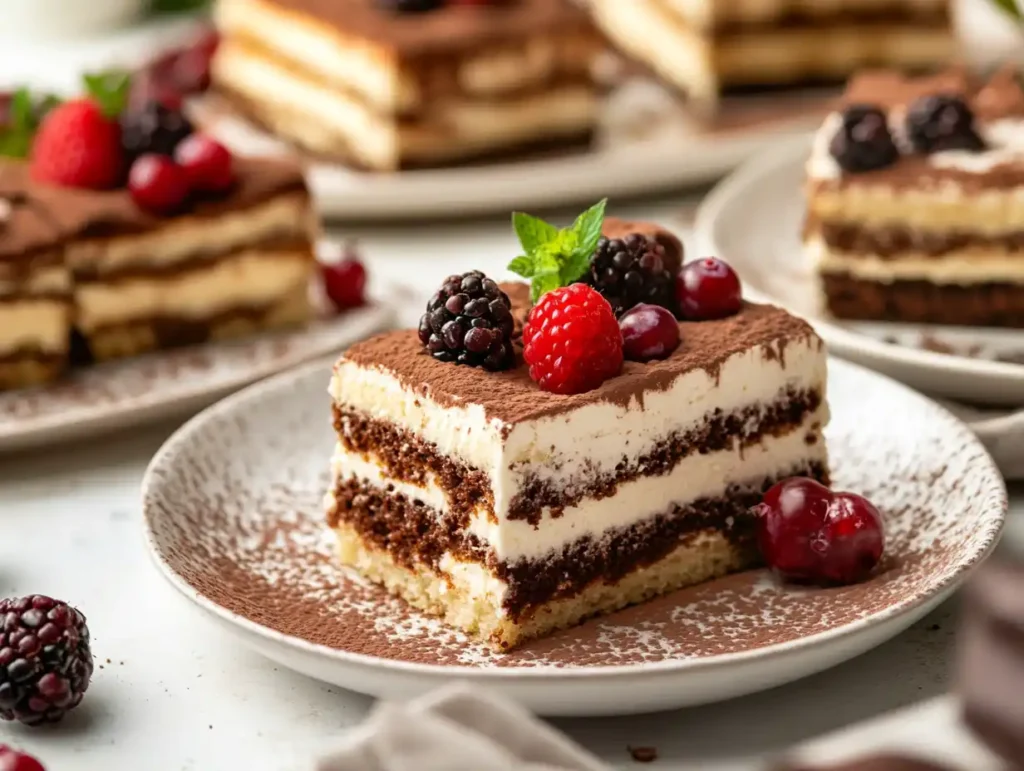
Whether you’re recreating the classic version or experimenting with modern twists, this dessert offers plenty of room for personalization. It’s ideal for holidays, romantic dinners, birthday celebrations, or simply as a treat for yourself. And the best part? You don’t need to be a pastry chef to get it right just a little patience, quality ingredients, and love. https://royalesrecipes.com/yourwebsite-com-fresh-lemon-bundt-cake/
Now that you’re armed with the knowledge, ingredients, and step-by-step instructions, it’s time to tie on your apron and bring this delightful creation to life in your own kitchen. Buon appetito!

